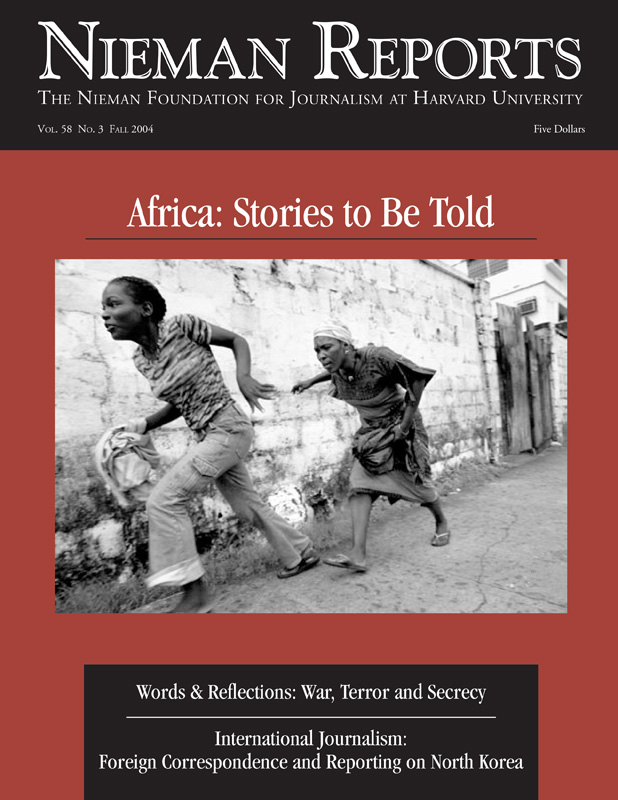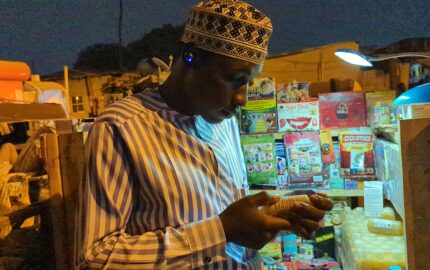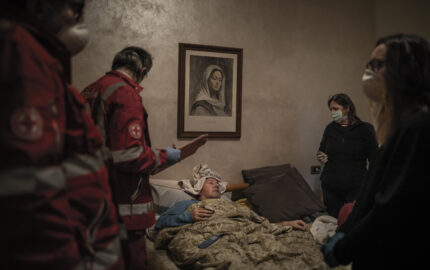
So many killed and tortured, and yet so little coverage. That, in broad terms, was the motivation for U.S. News & World Report to conduct a months-long probe into the secret world of the North Korean political prisons. While the media have showered plenty of attention on North Korea’s bid to develop nuclear weapons, relatively little effort has gone into examining human rights conditions in the impoverished, totalitarian state.
More than 200,000 North Koreans are believed to be held in political prisons, and some 400,000 have perished there over the years, according to U.S. and South Korean officials and human rights activists. These camps are important not only for the human cost they exact but because they are a signature means of control for a regime obsessed with threats within and without. North Koreans have been tossed into the gulag for such offenses as sitting on a picture of North Korean leader Kim Jong Il or listening to foreign radio. Perceived political foes—and, in many cases, their kin—are removed from society and sent into prison. The prisons serve to strike fear into any North Korean who might rise to challenge the government.
To my editors and me, this modern-day gulag—as the chain of camps are known—seemed to provide an important window on the North Korean system, revealing part of the basic nature of a regime at loggerheads with the United States.
Starting to Report the Story
In the winter of 2003, I sat in the office of a senior Bush administration official for the first in what would become a long string of interviews and meetings on the imprisonment of political opponents—real and imagined—in North Korea. The official, speaking on background, related a practical problem U.S. intelligence had faced in gathering information about the gulag. A U.S. spy satellite couldn’t locate the fenced perimeter of one camp in northeastern North Korea. Only after repeatedly pulling back the frame did the satellite at last capture the fortified fencing that marks the full dimensions of the complex: something larger than the entire District of Columbia, with clusters of buildings here and there resembling small villages. This official—and others—said that the Bush administration was focusing more attention on the gulag.
There was an important reason for that focus: George W. Bush himself. In Bob Woodward’s book, “Bush at War,” the President showed his agitation over the North Korean camps, talking about the torture and separation of families and shouting, “I loathe Kim Jong Il!” But the President’s personal anger over the camps goes deeper, it turns out. Recalling a private conversation with Bush, Senator Sam Brownback, a Republican from Kansas, told me that the gulag, more than anything else, is “why the President is after Kim Jong Il: It’s how he treats his own people.”
Brownback’s interview proved to be important for us. The sense that the camps are one motivation for Bush’s hard-line response to North Korea deepened our belief that reporting on the gulag was well justified—and not only as a story of horrors inflicted on the powerless by the powerful.
Ultimately, though, we felt that the story of the gulag should be told in human terms—from the viewpoint of the victims. Knowledgeable officials in Washington and Seoul, as well as human rights activists in both countries and academic observers, could provide useful context and overview. But the most compelling reports would come from those few who had survived the camps and fled North Korea to tell their stories. That meant doing most of the reporting from South Korea.
The North Korean government denies that political prisons even exist, and no reporter is believed ever to have had an opportunity to visit one. Firsthand observation is impossible. And a striking fact that emerged quickly in our reporting was how small the field of potential interviewees with personal experience in the camps was: some 10 in all. Relatively few people are released from the camps, and few of those have then managed to escape from North Korea.
Working through human rights groups in Seoul, I managed to interview five people who survived or worked at the camps and who live in South Korea. But the exercise quickly laid bare the problem that has made most traditional human rights groups reluctant to publish major studies about the camps: there exists a frustratingly limited amount of corroborating and firsthand evidence, at least when compared with typical human rights investigations.
“There is a reluctance to credit the stories of refugees,” says a veteran human rights worker in describing the North Korean problem. And there is something else that has apparently deterred human rights groups, in general, from taking on the North Korean gulag in a big way. This involves a past pattern by South Korean intelligence of manipulating information about North Korea. Past distortions about Kim Jong Il’s lifestyle, living conditions in the North, and Pyongyang’s military capabilities have sown cynicism in South Korea and among human rights observers about the quality of the scant information on the camps that has been carried out of the North. An important and recent exception has been the work of the U.S. Committee for Human Rights in North Korea, a group that last year released an ambitious and broad study of political imprisonment in the North. The study’s author, David Hawk, became an important source for our story, serving as a master of detail on what has been a topic with few specialists.
Despite these difficulties, a broadly consistent assessment of the scope and role of the camps—and the nature of the abuses—is shared by officials in Washington and Seoul and by that portion of the human rights community that has watched North Korea closely. The most detailed accounts, naturally, come from the survivors. A Seoul-based group called the Citizens’ Alliance for North Korean Human Rights, led by Benjamin Yoon, proved to be an invaluable source of analysis and, more importantly, a way station for contacting those who spent time in the camps. The Citizens’ Alliance and the U.S. Committee for Human Rights in North Korea both helped provide confirmation of the identity of the survivors I interviewed, as well as the reliability of their general accounts. In some cases, U.S. officials on background, as well as the published proceedings of past human rights conferences, provided further backup for the stories of the victims.
Hearing Survivors’ Stories
Some survivors were reluctant to talk, I was warned. And yet, most of those whom I met with seemed eager to tell their stories. They conveyed a sense of mission: to bear witness to what they have experienced and seen. Talking with them, in some respects, was similar to interviewing victims of savage crimes anywhere. These were not interviews that could be conducted crisply or efficiently in terms of quickly drawing out organized bits of information. Sometimes our conversations went on for hours, a reflection of both the time needed for consecutive translations and the need to let the victims talk without feeling pressure. The sessions were often dominated by rambling recollections, with specific anecdotes tumbling out slowly.
As they described the torture sessions, some survivors showed moments of great emotion. Lee Soon Ok, a woman who’d done accounting work for a Communist Party distribution center and who later endured beatings and water torture, teared up as she expressed disbelief that a system she had loyally served had turned against her so brutally. But more often, I was struck by the deadpan recollections of torture methods and details of camp life. Some chose to show me physical scars from their abuse. Lee Young Kook, a man who once served as bodyguard for Kim Jong Il, rolled up his pants to show me the grayish-brown scars on his right leg, a remnant of blows from long wooden sticks. “It was a system to kill us,” he said.
In its telling, there is little need to dramatize such material. It speaks for itself. I felt that the writer’s job was mostly to get out of the way and let the stories—once distilled—tell themselves. One particularly articulate survivor, Kang Chul Hwan, was imprisoned at the No. 15 camp at Yodok as a boy simply because his grandfather was suspected of disloyalty. Kang was eventually released, and after he escaped to South Korea he became a journalist for a major Seoul daily, Chosun Ilbo, covering a subject he has lived: North Korean affairs. Perhaps because of his professional instincts, Kang proved to be among the most dispassionate and detail-oriented interviewees in recalling his years in prison.
In Seoul, I was also able to meet up with a former camp driver named Ahn Myong Chul. His observations were especially useful, coming from someone who had been part of the prison establishment but who later turned against the system and fled. That interview was perhaps most memorable—and uncomfortable—for his matter-of-fact recollections of participating in the beating of prisoners, acts he now obviously regrets. But at the time, he acknowledged, the attitude among security personnel was that prisoners were somehow less than human. By telling their stories now, Ahn and the lucky few who got out of the gulag are exposing horrors once successfully hidden from view.
Despite the fact that international news covers rarely sell well, the editors thought that the poignancy of the story and the depth of depravity—along with the importance of North Korea as a security issue—together justified making it a cover story. The article generated considerable reader interest. I was invited to several television interviews and a couple of panels touching on the topic. I was told by a U.S. senator a few weeks later that the story was seen by a number of lawmakers and influenced their views as they considered new legislation on admitting North Korean refugees to the United States.
Thomas Omestad is a senior writer based in Washington who covers diplomacy and international news for U.S. News & World Report.


